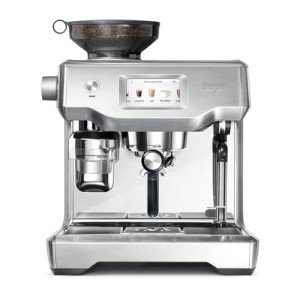The Art of Italian Espresso Machines: A Brewed Tradition
Italian espresso machines are not just devices; they are an essential part of Italy's rich coffee culture, representing a blend of artistry, engineering, and design. Coffee aficionados around the world acknowledge the value of high-quality espresso, a staple of Italian life and cuisine. This post explores the history, mechanics, types, and elements to think about when purchasing an Italian espresso machine, showing the depth of this beloved beverage and its brewing techniques.
History of Espresso Machines
The espresso machine's advancement go back to the early 20th century in Italy, where coffee was not merely a beverage but an essential social ritual. The initial efforts to brew espresso started with easy, stove-top models, gradually progressing into complicated machines that might reproduce the best brew.
- 1901-- The First Espresso Machine: The very first steam-powered espresso machine, called the "Ideale," was established by Luigi Bezzera. Heat Exchange Espresso Machines marked a turning point in espresso developing.
- 1938-- The Lever Machine: The intro of the lever machine made it much easier to manage the pressure utilized in espresso extraction, boosting taste consistency.
- 1947-- The Automatic Machine: Reaching more customers, Gaggia released the first automatic espresso machine, more promoting espresso bars.
- 2007-- The Digital Age: Technological advancements resulted in the birth of completely programmable machines, permitting users to personalize their brewing settings to accomplish a personalized coffee experience.
Key Features of Italian Espresso Machines
Italian espresso machines embody precision, craftsmanship, and development. Here are some crucial components that highlight their significance:
| Feature | Description |
|---|---|
| Boiler Type | Identifies how heat is created and preserved. Common types include single boiler, dual boiler, and heat exchanger. |
| Group Heads | Where the coffee is brewed; commercial machines frequently have numerous group heads for effectiveness. |
| Pressure Control | Crucial for achieving the best espresso; most machines run at 9 bars of pressure. |
| Frothing Capabilities | The steam wand enables for milk frothing, essential for drinks like cappuccino and latte. |
| Construct Quality | The products used (stainless-steel, brass, and so on) impact resilience and heat retention. |
Types of Italian Espresso Machines
Choosing the ideal machine depends upon user choices, budget, and intended use. Below are the main types of Italian espresso machines:
Manual Espresso Machines
- Pros: Offer complete control over the developing procedure, enabling a tailored touch.
- Cons: Require ability and practice, can be labor-intensive.
Semi-Automatic Machines
- Pros: Provide a balance between automated and manual procedures; users control water flow.
- Cons: Can have a steeper learning curve than completely automatic machines.
Completely Automatic Machines
- Pros: Simplify the developing procedure with push-button operations; perfect for newbies.
- Cons: May sacrifice some of the nuances of manual brewing.
Super-Automatic Machines
- Pros: Grind, tamp, brew, and froth immediately; practical for hectic lifestyles.
- Cons: Less control over the brewing variables, potential for a less genuine espresso experience.
Buying Guide: Factors to Consider
Choosing the ideal Italian espresso machine can be difficult, however thinking about the following elements can simplify the decision-making process:
- Budget: Italian espresso machines vary from affordable to high-end models, so set a budget upfront.
- Usage Frequency: Evaluate how typically you will use the machine; day-to-day users may desire a more long lasting choice.
- Space: Measure your kitchen area or counter space; some machines can be large and need adequate clearance.
- Maintenance: Consider ease of cleaning; machines with removable parts or built-in cleaning functions may decrease upkeep.
- User Skill Level: Beginners might prefer completely or semi-automatic machines, while experienced baristas can deal with manual machines.
- Brand name Reputation: Research brands understood for quality, such as Breville, Gaggia, and La Marzocco.
Popular Italian Espresso Machine Brands
Italian craftsmanship is renowned for producing a few of the very best espresso machines worldwide. Here are top brand names worth considering:
- Gaggia: Known for its home espresso machines and price.
- La Marzocco: An exceptional brand name known for its commercial-grade machines and ingenious innovation.
- Rancilio: Renowned for its long lasting construct and professional-quality machines appropriate for home and commercial use.
- Sage/Breville: Offers advanced functions and easy to use styles, ideal for both amateurs and enthusiasts.
Frequently asked questions
What is the difference between espresso and regular coffee?
Espresso is a concentrated coffee brewed by forcing hot water through finely-ground coffee under pressure. It has a thicker consistency, richer flavor, and greater caffeine concentration than regular coffee.
Can I make milk-based beverages with an espresso machine?
Yes, numerous Italian espresso machines feature a steam wand to froth milk for drinks like cappuccinos, lattes, and macchiatos.
How often should I clean my espresso machine?
Routine upkeep is important. Generally, a thorough cleaning is advised every few weeks, while descaling must be done every 1 to 3 months, depending on water hardness.
What is the perfect pressure for brewing espresso?
The perfect pressure for brewing espresso is around 9 bars. This pressure makes sure the optimal extraction of flavors from the coffee premises.
Are more pricey machines worth the investment?
Higher-end machines often use better materials and technology, offering enhanced sturdiness and more consistent results. For severe coffee enthusiasts, buying a great machine can raise the espresso experience significantly.
Italian espresso machines are a lot more than mere brewing gadgets; they are a celebration of a cultural custom that has influenced coffee consumption worldwide. With various models readily available to fit any user's needs-- varying from novices to experienced baristas-- there is an Italian espresso machine completely fit for everybody. As you start your espresso journey, understanding the history, mechanics, and options will enhance your experience and appreciation for this time-honored beverage. Whether you look for to recreate a coffee shop ambiance at home or fine-tune your developing technique, these machines are capable of delivering extraordinary cups of espresso decorated with the abundant history of Italian coffee culture.

